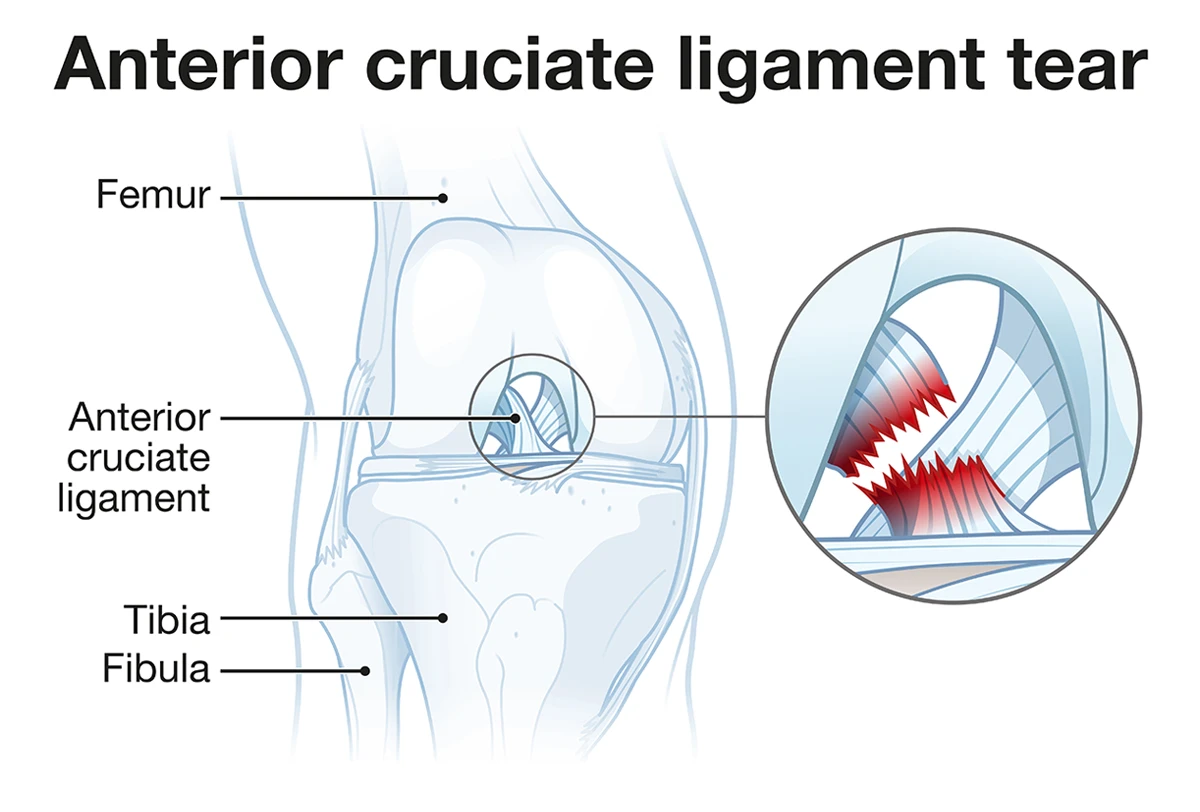ACL injury
Find a doctorAn anterior cruciate ligament (ACL) injury is a common knee injury. It occurs when there’s a tear or sprain in the ACL, which helps control how you move your knee. At Atrium Health Floyd and Harbin Clinic, our orthopedic specialists expertly perform ACL surgery to repair torn ACLs and stabilize your knee.

A complete tear of the anterior cruciate ligament (ACL) is shown.
What is an ACL injury?
Your ACL is a strong band of tissue that runs in front of each kneecap. It connects your thigh bone (femur) to your shinbone (tibia). An ACL injury occurs when the ligament partially or completely tears. Sometimes, the ACL doesn't tear but stretches too much, causing a sprain.
Causes of ACL injuries
Any sudden stop or change in lower body movement can put too much force on the ACL, causing it to stretch or tear. Common causes of ACL injuries include:
- Hard landing from a jump
- Impact to the side of the knee
- Overextending, or hyperextending, the knee (when the knee joint bends backward)
- Stopping and changing direction quickly
ACL injury symptoms
Signs and symptoms of an ACL injury can vary depending on the severity of the injury. They may include:
- Popping sound at the time of injury
- Feeling like your knee is giving out when you put weight on it
- Inability to fully extend the knee
- Knee swelling soon after injury
- Pain, especially when you try to put weight on the injured leg
ACL injury types
Health care providers use a grading system to determine the ACL injury type or severity.
- Grade 1: The ACL is stretched but not torn.
- Grade 2: The ACL is partially torn.
- Grade 3: The ACL is completely torn.
ACL injury diagnosis
Your provider will perform a physical exam to check your knee's range of motion and look for swelling and other symptoms. Imaging tests can determine whether you have an ACL tear. These tests may include:
- MRI to determine the extent of the injury, as well as damage to other tissue
- Ultrasound to look for damage to ligaments, muscles or tendons
- X-ray to rule out a fractured bone
ACL injury risk factors
Certain factors may increase your chances of having an ACL injury. These risk factors include:
- Being female
- Wearing improperly fitted shoes or sports equipment
- Playing sports on artificial turf
- Playing sports that require sudden stops and changes in direction, such as basketball, football, soccer and skiing
ACL injury prevention
You can lower your chances of an ACL injury by taking care of your knees and legs. Actions you can take include:
- Learn proper jumping and landing techniques.
- Perform exercises to strengthen your leg and core muscles, which help stabilize your lower body.
- Stretch, warm up and cool down before engaging in physical activity.
Related conditions
Orthopedic services
Personalized orthopedic care from experts you trust
Get the MyAtriumHealth app
Get test results, message your provider & more.